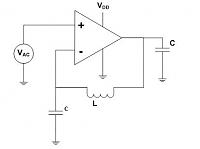Amplifying DC voltage from 5V to 12V – I use an Arduino board with a 5V output supply but I Ineed to operate 12V motor. I know that I could connect the Arduino to a 12V power supply to solve the problem. But but I can’t do it for some of reason so I have to build a circuit which will get 5v DC input from the Arduino and will supply 12V DC in the output. Can someone help?. Read more
Deviation from expected behavior of Sallen key – I am trying to make a demonstration for electrical department students to show them a response of a real second order system and I chose Sallen Key. I built it on bread board.
R1= 10k, R2 = 100k, C1=100uf, C2=1uf.
When I give square wave (from Arduino) input, I get a response that looks similar to second order, but with some strange behavior in the rising curve in the beginning. Can anyone tell me why this strange behavior occurs? Read more
UART RX TX LED driver using opamp – I’m trying to build a circuit which flashes LEDs when there is data transmission on the lines. Instead of using transistors, I saw an example of an opamp circuit that can be used to light the LEDs since this is much simpler design and I can use a single dual op-amp chip to drive both RX and TX LEDs. This is the schematic I based my design from:
This is exactly how I wired my circuit…the only difference is that I have a 1uF cap in parallel with the Vcc line. This, in theory, should light the LEDs when the TX/RX line go low. The problem is that as soon as I apply Vcc, the diodes light up even though both RX and TX are idle (high). What am I missing here? Im using the LMV358 dual opamp, and the Vcc is 5v and the TX/RX lines are 1.8v — if that makes a difference. Does Vcc also need to be 1.8v for this to work? Read more
Why is the NAND gate so hot? – When I debug one design of 2-Input Positive-NAND gate, I found it was very hot sometimes and oscillated, but when I power-off it for several minutes it works well again. What is the issue? Should I put some resistors as load for each output? Or should it not be connected in such a way? Read more
Periodic ripples on the control voltage of oscillator – I have designed an LC oscillator that is controlled by applying voltage to NMOS varactors. When I put a resistance between control voltage and varactors, I see there are periodic ripples on the varactor node. The importance of this point is that I use the VCO in PLL and this ripples in PLL creates more noise. Does anybody know if if these ripples on the control voltage of LC VCO is natural? What should I do to remove them? Read more
Open loop settings – Is this setting valid for finding the open loop gain of the opamp? If yes then how is this done in Cadence Spectre? Read more

What is the best opamp for this differential amplifier? – I am making the analog circuit of AC voltage interruption for the short time or AC cut by 2 ms. I have done the differentiator with the TL074 IC. By looking at the output waveform it is very glitchy. I am looking for a good performance opamp for the ac voltage sudden detection. Can anyone suggest a good performance IC for the differentiator? Read more
Actual output of sigma-delta ADC – While going through its material I found that while some show that the output of the modulator is series of 0s and 1s, some show it as series of 1 and -1. Which is correct?
Also, the output of decimator (on supplier’s site) is shown as a discrete signal and not a digital (0 and 1) but the ADC should give a digital output. Read more
Phase-locked loop locking problem – I have designed a PLL in cadence. The VCO structure is based on LC. The control voltage enters into lock range but, unfortunately, the structure can’t get to phase locking. Does anybody have any experience with this problem? Read more
Is this cap-drop power supply truly reversed? – I found a cap-drop power supply schematic in which 220V AC LINE is connected directly to 3.3V VCC of output voltage ( 220 to 3.3V ):

But I need to reverse the output so the GND be connected to an 220V AC line. So I changed the schematic to this :

Is the second schematic truly changed? Read more

